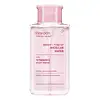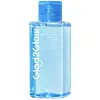What's inside
What's inside
 Key Ingredients
Key Ingredients

No key ingredients
 Benefits
Benefits

 Concerns
Concerns

 Ingredients Side-by-side
Ingredients Side-by-side

Water
Skin ConditioningPEG-6 Caprylic/Capric Glycerides
EmulsifyingHexylene Glycol
EmulsifyingNiacinamide
SmoothingPEG-7 Olive Glycerides
EmollientGlycerin
HumectantPropanediol
SolventMannitol
HumectantPropylene Glycol
HumectantPhenoxyethanol
PreservativePanthenol
Skin ConditioningXylitol
HumectantAllantoin
Skin ConditioningCetrimonium Bromide
AntimicrobialCucumis Sativus Fruit Extract
EmollientDisodium EDTA
Ethylhexylglycerin
Skin ConditioningBiosaccharide Gum-2
Skin ConditioningButylene Glycol
HumectantParfum
MaskingActinidia Polygama Fruit Extract
Skin ConditioningWater, PEG-6 Caprylic/Capric Glycerides, Hexylene Glycol, Niacinamide, PEG-7 Olive Glycerides, Glycerin, Propanediol, Mannitol, Propylene Glycol, Phenoxyethanol, Panthenol, Xylitol, Allantoin, Cetrimonium Bromide, Cucumis Sativus Fruit Extract, Disodium EDTA, Ethylhexylglycerin, Biosaccharide Gum-2, Butylene Glycol, Parfum, Actinidia Polygama Fruit Extract
Ingredients Explained
These ingredients are found in both products.
Ingredients higher up in an ingredient list are typically present in a larger amount.
Disodium EDTA plays a role in making products more stable by aiding other preservatives.
It is a chelating agent, meaning it neutralizes metal ions that may be found in a product.
Disodium EDTA is a salt of edetic acid and is found to be safe in cosmetic ingredients.
Learn more about Disodium EDTAPanthenol is a common ingredient that helps hydrate and soothe the skin. It is found naturally in our skin and hair.
There are two forms of panthenol: D and L.
D-panthenol is also known as dexpanthenol. Most cosmetics use dexpanthenol or a mixture of D and L-panthenol.
Panthenol is famous due to its ability to go deeper into the skin's layers. Using this ingredient has numerous pros (and no cons):
Like hyaluronic acid, panthenol is a humectant. Humectants are able to bind and hold large amounts of water to keep skin hydrated.
This ingredient works well for wound healing. It works by increasing tissue in the wound and helps close open wounds.
Once oxidized, panthenol converts to pantothenic acid. Panthothenic acid is found in all living cells.
This ingredient is also referred to as pro-vitamin B5.
Learn more about PanthenolThis ingredient is derived from caprylic and capric acids. It is an emulsifier with emollient properties.
According to the manufacturer, it is hydrophilic and soluble in aqueous solutions (water). They also state this ingredient is stable in a medium pH range (~5 - 8).
As an emulsifier, it helps make oils and oil-soluble ingredients more soluble in water.
Learn more about PEG-6 Caprylic/Capric GlyceridesPropylene Glycol is an odorless, colorless liquid. As a humectant, it helps skin retain moisture. It also aids in delivering active ingredients.
Another role of this ingredient is preventing a product from melting or freezing. Propylene glycol also adds antimicrobrial properties to a product, elongating product lifespan.
This ingredient is considered an organic alcohol and commonly added into both cosmetics and foods.
Those with sensitive skin or conditions may develop a rash when using this ingredient.
Learn more about Propylene GlycolWater. It's the most common cosmetic ingredient of all. You'll usually see it at the top of ingredient lists, meaning that it makes up the largest part of the product.
So why is it so popular? Water most often acts as a solvent - this means that it helps dissolve other ingredients into the formulation.
You'll also recognize water as that liquid we all need to stay alive. If you see this, drink a glass of water. Stay hydrated!
Learn more about Water